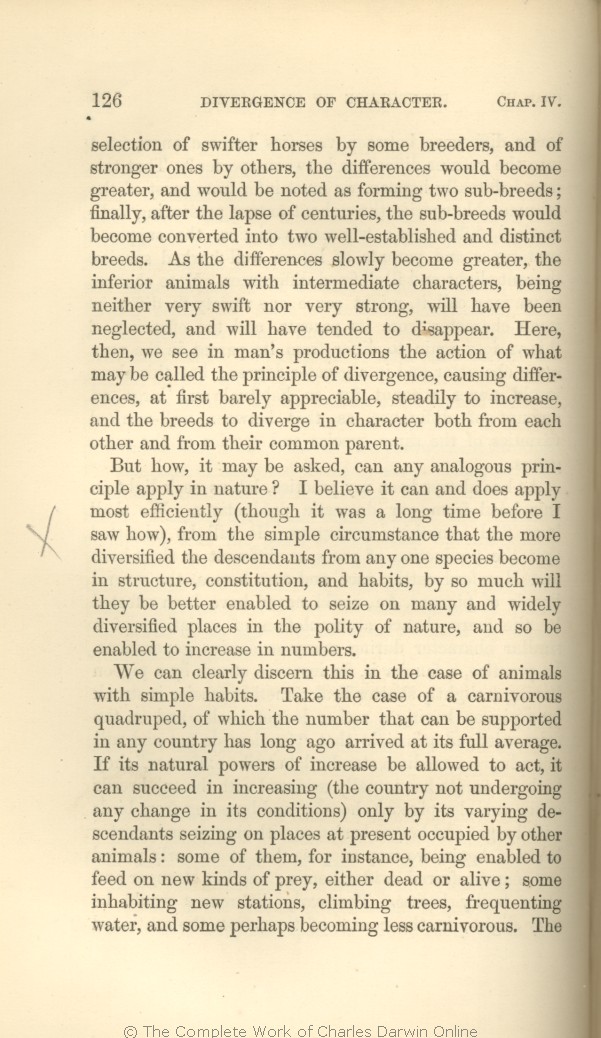selection of swifter horses
by some breeders, | by some breeders, 1859 1860 1861 1866 1869 |
| in the one case, 1872 |
| by 1859 1860 1861 1866 1869 | | in the 1872 |
| others, 1859 1860 1861 1866 1869 | | other, 1872 |
| sub-breeds; 1859 1860 1861 1866 1869 | | sub-breeds. 1872 |
| finally, 1859 1860 1861 1866 1869 | finally, 1872 |
| after 1859 1860 1861 1866 1869 | after 1872 |
| the 1859 1860 1861 1866 1869 | the 1872 |
| lapse 1859 1860 1861 1866 1869 | lapse 1872 |
| of 1859 1860 1861 1866 1869 | of 1872 |
| centuries, 1859 1860 1861 1866 | | centuries 1869 | centuries, 1872 |
| the 1859 1860 1861 1866 1869 | the 1872 |
| sub-breeds 1859 1860 1861 1866 1869 | sub-breeds 1872 |
| would 1859 1860 1861 1866 1869 | would 1872 |
| become 1859 1860 1861 1866 1869 | become 1872 |
| converted 1859 1860 1861 1866 1869 | converted 1872 |
| into 1859 1860 1861 1866 1869 | into 1872 |
| two 1859 1860 1861 1866 1869 | two 1872 |
| well-established 1859 1860 1861 1866 1869 | well-established 1872 |
| and 1859 1860 1861 1866 1869 | and 1872 |
| distinct 1859 1860 1861 1866 1869 | distinct 1872 |
| breeds. 1859 1860 1861 1866 1869 | breeds. 1872 |
| As 1859 1860 1861 1866 1869 |
| Ultimately, after the lapse of centuries, these sub-breeds would become converted into two well-established and distinct breeds. As 1872 |
| slowly 1859 1860 1861 1866 1869 | slowly 1872 |
| become 1859 1860 1861 1866 | | became 1869 1872 |
| will 1859 1860 1861 1866 | | would 1869 | | would not 1872 |
| neglected, 1859 1860 1861 1866 1869 |
| used for breeding, 1872 |
| have 1859 1860 1861 1866 1869 | | thus have 1872 |
| tended to 1859 1860 1861 1866 1872 | tended to 1869 |
| disappear. 1859 1860 1861 1866 1872 | | disappeared. 1869 |
| man's 1859 1861 1866 1869 1872 | | mans 1860 |
| character 1859 1860 1861 1866 1869 | | character, 1872 |
|
But how, it may be asked, can any analogous principle apply in nature? I believe it can and does apply most
efficiently | efficiently 1861 1866 1869 1872 | | efficiently, 1859 1860 |
| (though it was a long time before I saw how), from 1861 1866 1869 1872 |
| from 1859 1860 |
|
We can clearly
discern | discern 1861 1866 1869 1872 | | see 1859 1860 |
| powers 1859 1860 1861 1866 1869 | | power 1872 |
| its 1859 1860 1861 1866 1869 | its 1872 |
| animals: 1859 1860 1861 1866 1869 | | animals; 1872 |
|









